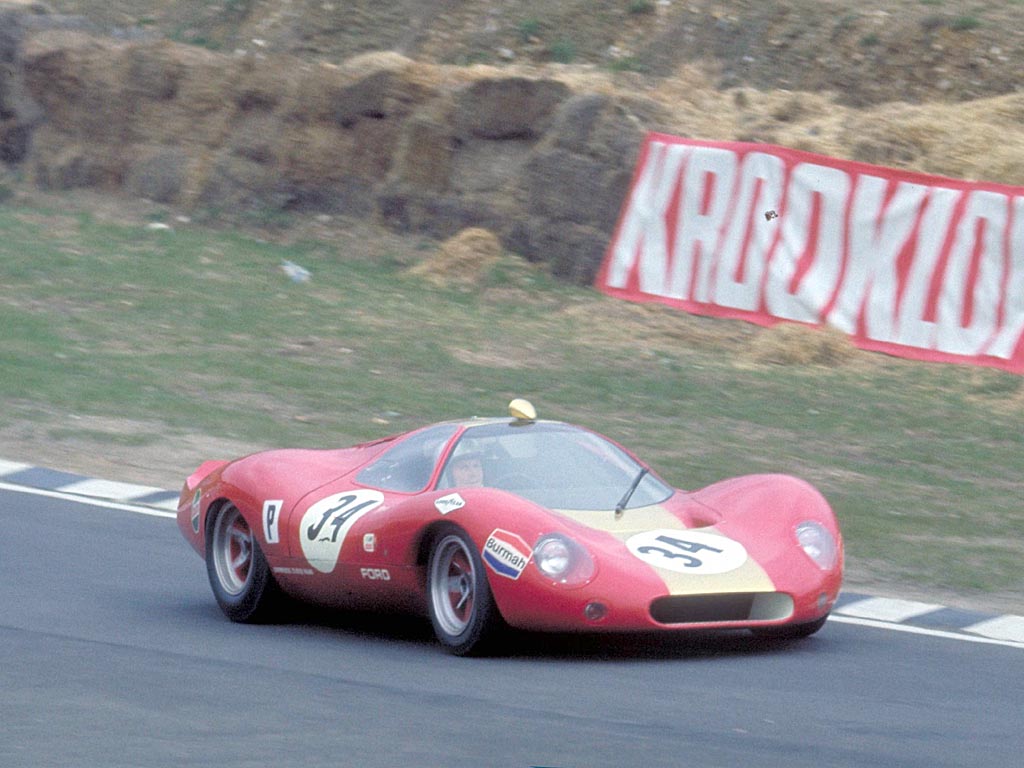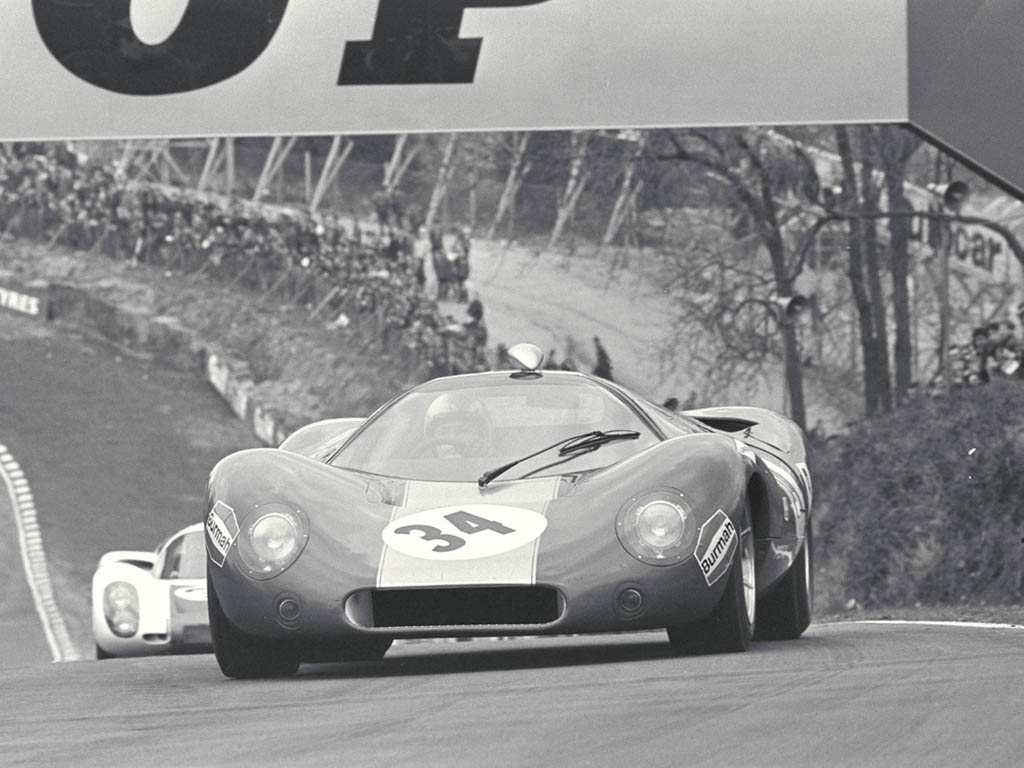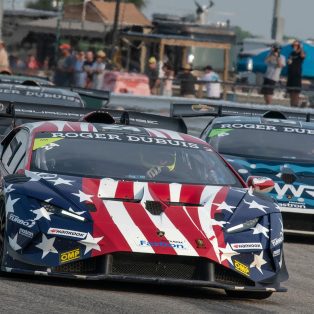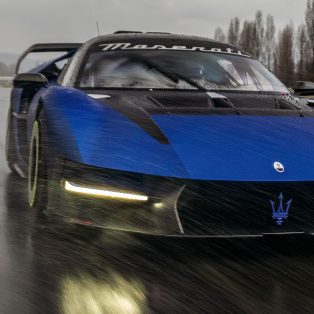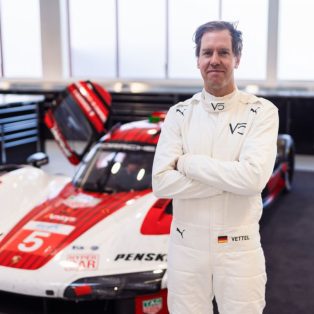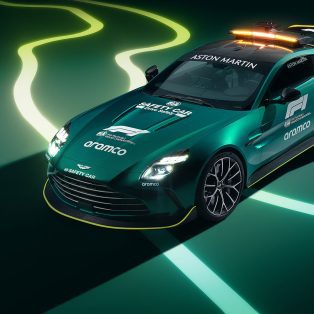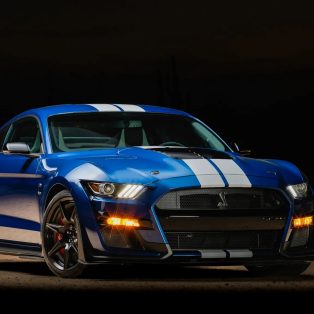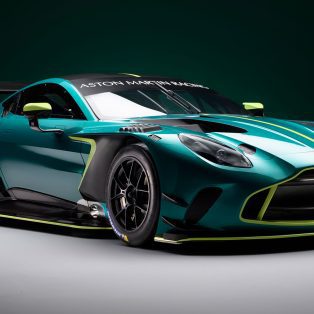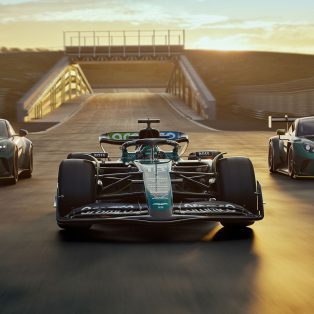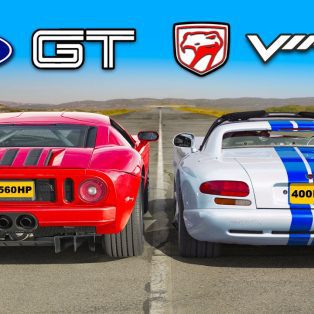1968 Ford F3L
A GT40 Replacement
Also known as the Ford P68, this curvaceous racecar was built as a possible replacement for the GT40. Alan Mann Racing was specifically responsible for development of the new prototype. It used an upcoming F1 car as a basis for both its engine and chassis.
Prototype racing was limited to a three liter capacity in 1968. This restriction motivated Alan Mann Racing take a very close look at the Lotus Type 49 which featured a three liter V8. Financed by Ford, the Cosworth DFV V8 was designed specifically for Type 49. After a promising 1967 season, the DFV V8 seemed fitting for the basis of a new sports prototype.
Unlike the steel GT40, an aluminum monocoque with a rear sub frame supported the F3L. Such a setup was similar to the Lotus Type 49, but the in the F3Ls case, the engine was not fully stressed. An aluminum body designed by Len Bailey covered the car which was not only strikingly beautiful, but featured a low drag of 0.27 Cd.
On The Track
After the a brief testing period, the F3L’s racing career started at the 1968 BOAC 500 miles at Brands Hatch. Two cars had been made but only one was able to start the race with Bruce McLaren and Mike Spence at the wheel. The car lasted 66 laps until a driveshaft problem occurred. Fortunately, John Wyer’s team took the overall victory narrowly beating two Porsche 907s.
Following Brand Hatch, two cars were brought out to the Nurburgring 1000kms. The event really pinned Porsche against Ford with Porsche’s 907 and 908 prototypes challenging John Wyer’s GT40s and Alan Mann’s F3L. Unfortunately Chris Irwin suffered a bad crash in his F3L which retired both him and car from racing. The second car, driven by Gardner and Attwood failed early due to brakes. In the end, even the proven GT40s were beat by the Porsche 908 which had debuted at the race.
Ford F3Ls ran in three more races for the 1968 season. Due to reliability problems the cars failed to finish any race. The highlight of the season, and the F3Ls racing career came at the Spa 1000 kms where Frank Gardner received pole position.
Conclusion
Unfortunately, during the late sixties, Ford’s interest in international racing was on the decline. Especially after endorsing a no-expense spared GT40 program for several years and achieving top honors in field, there was little motivation to develop a complex racecar such as the F3L. As such, only three examples were built with two surviving today.
The potential for the F3L was enormous and that is why Alan Mann went out on a limb to create it. Little did he know, the Cosworth DFV V8 would become the most successful engine in Formula racing and also would power the winning car at the 1975 LeMans. Had Ford better supported the F3L project, to a point of good reliability, no doubt a great rivalry would have formed with Ferrari and their 312 PB.
In Detail
| submitted by | Richard Owen |
| production | 3 |
| engine | Ford Cosworth DFV V8 |
| position | Mid Longitudinal |
| valvetrain | 4 Valves per Cyl, DOHC |
| fuel feed | Lucas Fuel Injection |
| displacement | 2993 cc / 182.6 in³ |
| bore | 85.7 mm / 3.37 in |
| stroke | 64.8 mm / 2.55 in |
| power | 313.2 kw / 420 bhp @ 9000 rpm |
| specific output | 140.33 bhp per litre |
| bhp/weight | 626.87 bhp per tonne |
| torque | 540 nm / 398.3 ft lbs |
| redline | 11100 |
| driven wheels | RWD |
| f brake size | mm / in |
| r brake size | mm / in |
| curb weight | 670 kg / 1477 lbs |
| transmission | Hewland DG300 5-Speed Manual |
| gear ratios | :1 |
| top speed | ~349.2 kph / 217.0 mph |





